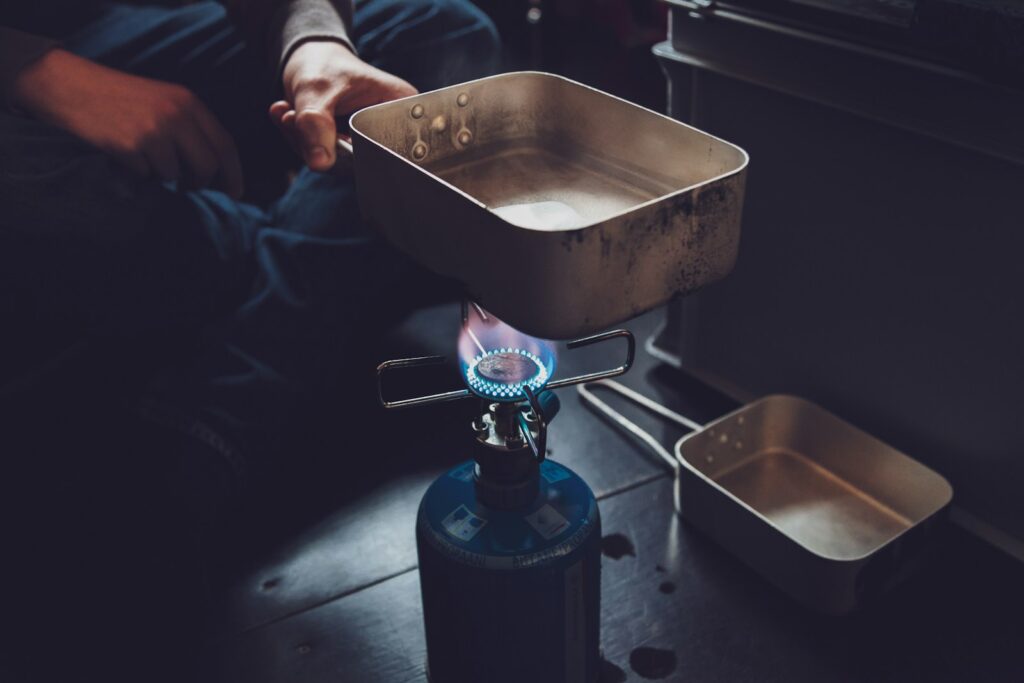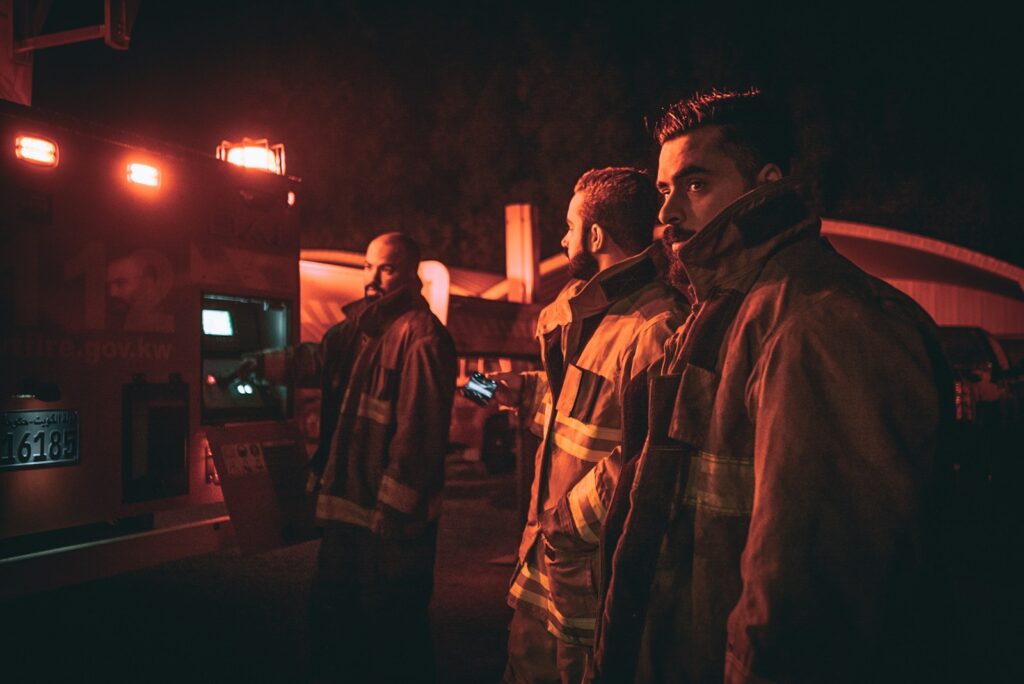We may earn money or products from the companies mentioned in this post.
Understanding wilderness survival skills is essential when you find yourself in the great outdoors, especially in situations where you’re off the beaten path or facing unexpected challenges. Wilderness Survival Experts are not just adventurers; they are knowledgeable individuals who have honed their skills through extensive training and real-life experiences. They know how to utilize nature’s resources to build shelters, forage for food, and ensure safety from wildlife.

The guidance of wilderness survival experts can be valuable whether you’re a seasoned outdoor enthusiast or planning your first backcountry trip. By learning from those who have navigated the harshest environments, you can adopt techniques that could one day prove to be lifesaving.
From Ernest Shackleton’s legendary Antarctic expedition to modern survival instructors like Dave Canterbury, there is a rich history and a wide array of survival strategies to explore.
Gaining insights from these experts can empower you to approach nature with respect and preparation. Their combined wisdom on survival principles can help you understand what gear to bring, how to read the land, and the mindset needed to overcome adversities in the wilderness.
Becoming acquainted with their teachings could make the difference between thriving in the wild and facing dire consequences.
Essentials of Wilderness Survival
In wilderness survival, preparing with the right mindset, mastering basic skills, and understanding emergency signaling are crucial. Your life could depend on how well you navigate these essentials.
Survival Mindset
Maintaining a positive attitude amid adversity is the cornerstone of survival. You must manage panic by staying focused and calm, which conserves energy and promotes rational decision-making. Embrace the idea of perseverance; survival is often a matter of persisting despite the odds.
Basic Survival Skills
Shelter, water, fire, and food are your main priorities in the wild. Your ability to find or create shelter protects you from the elements. Knowing safe methods to purify water prevents dehydration and illness.
Efficient fire-building techniques are vital for warmth, cooking, and safety. Lastly, acquire foraging and hunting knowledge for sustenance.
- Shelter: Leverage natural materials or a tarp to insulate and protect from weather.
- Water: Use boiling, chemical tablets, or filters to purify.
- Fire: Carry a lighter, matches, or know friction methods.
- Food: Identify edible plants or set traps for protein sources.
Emergency Signaling Techniques
When lost or in danger, make your location known through visual or audio signals. A mirror to reflect sunlight can alert rescuers from afar during daylight.
At night, create bright, controlled fires or employ flares if available. Sound carries well, so whistles or banging metal objects should be used to send distress signals.

- Visual: Mirrors, bright clothing, fire, or SOS patterns with rocks or logs.
- Audio: Whistles, SOS signal (··· — — — ···), or banging items together.
Shelter and Protection
In wilderness survival, your ability to create a stable shelter can mean the difference between comfort and exposure to harsh conditions. This section will guide you on strategically choosing a shelter location, ensuring insulation and heat retention, and securing protection from the elements.
Choosing a Shelter Location
When selecting a location for your shelter, consider the proximity to resources such as water and firewood, but avoid areas prone to natural dangers like flooding or avalanches. You’ll want a spot that has natural shielding from wind, preferably with materials nearby to construct your shelter.
For instance, a round lodge provides excellent wind resistance and can be built with materials such as branches and foliage found in your immediate vicinity.
Insulation and Heat Retention
To maintain body heat, your shelter must be well insulated. Utilize available resources like leaves, grass, or even snow for insulation material. A basic frame shelter built against a fallback, such as a large tree or boulder, creates a foundation upon which you can add insulating materials.
Emphasize creating a thick layer of insulation between you and the ground, as the earth absorbs body heat rapidly.
Protection from the Elements
Your shelter should safeguard you against wind, rain, and the cold. When building, create a structure such as a tarp shelter, which uses minimal resources—a plastic tarp and some cordage—for significant protection.
In snowy environments, a circular, igloo-like shelter can prevent snow accumulation, effectively protecting you from the elements. Always angle the entrance away from prevailing winds and reinforce the shelter’s walls to resist inclement weather.
Water Procurement and Purification
In wilderness survival, securing a clean water source and knowing how to purify it are vital skills. These steps ensure that the water you drink will not harm your health.
Locating Water Sources
You can increase your chances of finding water by observing the terrain and wildlife behaviors. Look for areas with lush vegetation, as they often indicate the presence of water.
Valleys or low-lying areas where water naturally collects may also hold potential sources. Streams, rivers, and lakes are obvious choices, but remember to check for morning dew or rainwater trapped by foliage.
Water Purification Methods
Once you’ve located a water source, it’s crucial to purify it to remove any harmful substances.

- Boiling: Boiling water for at least one minute kills most pathogens.
- Chemical Purification: Products like water purification tablets or household bleach can disinfect water effectively. Add half a teaspoon of bleach per five gallons of water, or double the dose if the water appears cloudy.
- Filtration: Using a water filter can physically remove particles and many pathogens from water.
Water Storage Solutions
How you store water can affect its safety and availability.
- Bottles or Canteens: Opt for durable materials that are easy to carry.
- Collapsible Containers: These are lightweight and can accommodate varying water volumes.
- Water Bladders: Suitable for larger quantities, bladders are preferable for setting up a base camp.
Remember, in the field of survival, your knowledge and skills in water procurement and purification can make a critical difference. Stay informed and practice these techniques to ensure your resilience in the wild.
Food Scavenging and Hunting
In wilderness survival, your ability to find food is crucial. Knowing what plants are safe to eat, how to effectively trap or fish, and mastering various hunting techniques will determine your success and survival.
Edible Plant Identification
Identify edible plants by studying reliable resources like the “art of scavenging for food in the wilderness”. Learn the shape, color, and texture of plants that are safe to consume. Always double-check with a reference to avoid poisonous look-alikes.
Safe Bets:
- Dandelions: Recognizable by their yellow flower, all parts are edible.
- Cattails: Found near wetlands, the roots, shoots, and pollen heads can be eaten.
Dangerous Plants to Avoid:
- Poisonous Berries: Brightly colored berries such as holly can be toxic.
- Deadly Nightshade: Dark berries and bell-shaped flowers are telltale signs.
Trapping and Fishing
Build traps or fish using makeshift tools to secure a meal without expending much energy. For trapping, construct simple snares from wire or cordage at game trails or burrow entrances. When fishing, use hooks made from bone, wood, or fashioned from safety pins, baited with worms or small insects.
Trap Types:
- Deadfall Trap
- Snare Trap
- Cage Trap
Fishing Methods:
- Spearfishing
- Hand Fishing
- Improvised Fishing Rod
Hunting Techniques
Master stealth and patience for hunting. Aim for small animals, which are more abundant and require less energy to catch. Understand animal behaviors and habitats; position yourself downwind to stay undetected.
Hunting Tips:
- Move Slowly: Avoid quick movements that can startle animals.
- Camouflage: Use mud, plants, or clothing to blend with the environment.
Weapons to Consider:

- Bow and Arrow
- Sling
- Homemade Spears
Remember, respect local regulations and protected species wherever you are. Your survival could depend on these skills, so practice them responsibly.
Fire Creation and Management
Mastering fire creation and management is a critical skill set for any wilderness survival situation. It’s about ensuring you can start a fire efficiently and keep it going safely for warmth, cooking, or signaling.
Fire-Building Fundamentals
First, you need to understand the science of fire. The three components of a fire are fuel, heat, and oxygen. Your fire-building process begins with gathering the right materials: start with tinder, which are easily combustible materials that catch fire quickly.
This is followed by kindling, small sticks, and twigs that will burn with a little encouragement. Finally, fuel wood, larger pieces that will burn longer and sustain your fire.
When building your fire, structure is important. Create a stable base and arrange your tinder, kindling, and fuel efficiently. Traditional lay designs include the teepee, lean-to, and log cabin, each with its own advantages depending on conditions and purpose.
Maintaining a Fire
Once lit, your fire requires attention to maintain. You’ll need to progressively add kindling and fuel while also ensuring it doesn’t smother itself. Balancing the fire triangle elements—heat, fuel, and oxygen—is key.
- Add small sticks before larger logs.
- Allow space between logs for airflow.
- Monitor the flames, don’t let your fire become too large or too small.
Discovering the nuances of fire maintenance takes practice. For example, you may need to shield the flames from the wind or ensure the fire is receiving enough oxygen by gently blowing on it.
Fire Safety
Safety must be your top priority; a fire can become dangerous quickly. Always build your fire away from overhanging branches and dry brush. Keep water or dirt handy to extinguish flames if necessary.
Follow these guidelines:
- Clear a wide area around your fire site.
- Never leave your fire unattended.
- Completely extinguish the fire before leaving—drown, stir, and feel.
For an in-depth explanation of the tools and techniques for fire starting, consider fire starting techniques. It’s not just about survival; it’s about responsible wilderness stewardship.
Navigation and Orientation
Mastering navigation and orientation is a cornerstone of wilderness survival. Proficiency in using environmental cues, reading topographical maps, and navigating by celestial bodies greatly enhances your ability to thrive in the wild.
Using Natural Landmarks
In wilderness survival, you can utilize prominent natural landmarks as guideposts. Rivers, mountain ranges, and distinctively shaped trees can aid in maintaining your orientation.
For example, a river flowing in the direction you wish to travel provides a natural path to follow. Always be aware of your surrounding landmarks to keep a mental map of your location.
Map and Compass Basics
Understanding how to combine a topographical map with a compass is essential. Firstly, align the map with true north using your compass. Identifying major terrain features on the map and correlating them with your environment helps pinpoint your position. Be mindful to:

- Align the compass’s orientation arrow with the map’s north.
- Place the compass edge along your desired route.
- Rotate the azimuth ring until the north lines on the compass align with the map’s meridian lines.
This will give you the direction you need to head in while on the ground.
Stargazing for Direction
The night sky is a reliable navigation tool if you learn the key constellations. The North Star, Polaris, is nearly aligned with Earth’s north pole. Locate the Big Dipper constellation, find the “pointer” stars at the edge of the dipper’s cup, and follow their line to reach Polaris.
In the Southern Hemisphere, use the Southern Cross to approximate south; drawing a line through the longer axis of the cross and extending it downwards leads close to true south.
First Aid and Health
In the wilderness, first aid proficiency can mean the difference between life and death. Your ability to promptly and effectively administer first aid and handle health emergencies is crucial.
Basic First Aid Procedures
You have the power to stabilize a person who is injured or experiencing a medical emergency until professional help can be reached. Remember to size up the scene for safety, then identify life threats.
A focused assessment should follow: perform a head-to-toe check, record vital signs, and take the patient’s history. Those steps are your initial action plan.
Handling Common Injuries
For common injuries like sprains or fractures, proper immobilization is key. Learn to splint a limb to prevent further damage. In cases of severe bleeding, applying a tourniquet properly can save a life. Remember, for neck injuries, keep the patient still to stabilize a neck injury effectively. These skills are life-saving and essential for anyone venturing into remote areas.
Preventing Illness and Infection
Prevention is your best defense against illness and infection in the wild. Ensure all wounds are cleaned with water and soap or a suitable disinfectant. Applying sterile dressings is important to protect against infection.
Be aware of signs of infection, such as redness, swelling, or warmth, and seek medical attention if symptoms persist after initial care. Always prioritize hygiene, even in the wilderness, to reduce risks of illness.
Survival Gear and Tools
When facing the wilderness, your survival often hinges on having the right gear. Here is what you need to make it through challenging outdoor situations.
Essential Gear List
- Navigation: Compass and maps, or a GPS device
- Light: LED Flashlight or headlamp, with extra batteries
- Fire: Waterproof matches, lighter, fire starter
- Shelter: Tent, space blanket, or tarp
- Cutting Tool: Knife or multi-tool
- Communication: Whistle or mirror
- First-Aid Supplies: Bandages, antiseptics, and medicine
- Food: High-energy, non-perishable, easy-to-prepare items
- Water: Filtration system, purification tablets, and container
Usage of Multi-Tool Devices
Multi-tool devices are versatile pieces of your survival kit. They can serve as pliers, scissors, screwdrivers, and blades in one compact tool. This versatility makes them invaluable for tasks like repairing gear, cutting materials, or even medical emergencies when your kit might not contain specific instruments.
DIY Survival Tools
You can fashion emergency gear out of accessible materials. For example, using a clear plastic bag and natural sunlight, you can create a solar still to collect fresh water.
Sturdy branches and vine can be used to construct a shelter frame or a makeshift splint if necessary. Remember, creativity could be as critical as your actual gear in a survival situation.
Rescue and Evacuation
When venturing into the wilderness, understanding the basics of rescue and evacuation is essential for your safety. Successful rescue operations rely on meticulous preparation, effective evacuation strategies, and smooth interaction with rescue teams.
Planning for Rescue
Before you embark on any wilderness adventure, you must have a well-thought-out rescue plan. Identify key information such as the local emergency services, potential hazards, and the steps to activate a rescue. Research has shown that comprehensive analysis of past search and rescue attempts can inform better planning for current outings.
Evacuation Strategies
Your evacuation strategies should include both immediate actions in the face of danger and structured approaches to assist rescuers. Expect to be immersed in a wilderness environment where you might need to apply techniques such as:
- Self-evacuation: Quick movement away from imminent threats
- Improvised stretchers: Using available materials to transport injured persons
- Utilizing signals, such as mirror flashes or smoke, to alert rescue teams to your location
In some scenarios, as explained in a guide on mountain rescue evacuation, you might have to execute an evacuation without the aid of aircraft or vehicles due to weather conditions or terrain challenges.
Interacting with Rescue Teams
When interacting with rescue teams, clarity and accuracy in communication are paramount. Follow these best practices:

- Always stay visible and use established signals
- Keep your group together and make sure everyone is accounted for
- Convey the nature of injuries clearly if medical assistance is required
Learning and applying survival and medical training can greatly enhance your ability to interact effectively with rescue personnel. Their prompt response can be facilitated by your preparation and ability to provide precise information.
Frequently Asked Questions about Wilderness Survival Experts
In this section, you’ll find concise answers to some of the most common questions regarding wilderness survival experts, covering practical skills and knowledge essential for overcoming challenges in the outdoors.
What are the essential skills for wilderness survival?
Your survival in the wilderness hinges on mastering a core set of skills including building a fire, creating shelter, finding food and water, and knowing basic first aid. Each skill increases your chances of enduring harsh conditions when you’re far from civilization.
How do you find and purify water in the wild?
To find water, look for telltale signs in nature such as vegetation, the presence of animals, or dew. Once found, purify the water through boiling, chemical treatment, or filtration to remove pathogens and ensure its safety for drinking.
What are the basic techniques for building a shelter in nature?
When building a shelter, your priority is to insulate yourself from the ground, retain heat, and shield yourself from elements. Use natural materials like branches, leaves, and snow or debris to construct a barrier against the environment.
What is the importance of mental preparedness in survival situations?
Mental preparedness is crucial as it influences your ability to stay calm, make rational decisions, and maintain the hope necessary for survival. Effective stress management and a positive attitude greatly enhance your ability to cope with uncertainty and adversity.
How can you navigate without a compass in an unfamiliar wilderness area?
Navigating without a compass requires using natural indicators. The position of the sun, stars, the growth patterns of moss, and the flow of water can all provide clues to help orient yourself and find a direction.
What are the key differences between survival in different climates, such as desert versus arctic?
Survival techniques vary significantly between climates. In a desert, finding shade and water is imperative; conversely, in arctic conditions, you must prioritize maintaining your body heat and protecting yourself from frostbite and hypothermia.

